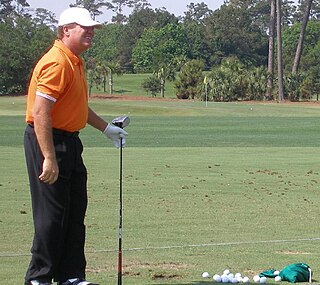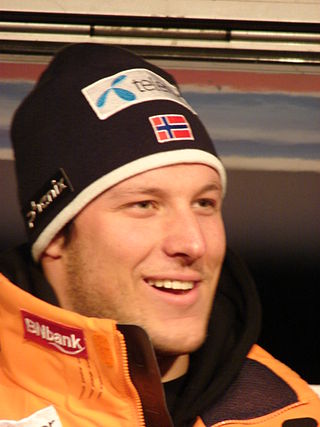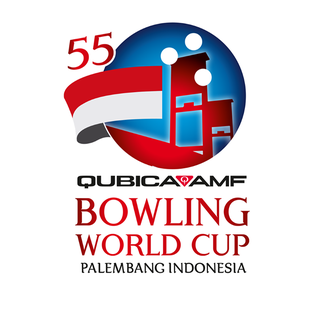
The FIS Alpine Ski World Cup is the top international circuit of alpine skiing competitions, launched in 1966 by a group of ski racing friends and experts which included French journalist Serge Lang and the alpine ski team directors from France and the USA. It was soon backed by International Ski Federation president Marc Hodler during the FIS Alpine World Ski Championships 1966 at Portillo, Chile, and became an official FIS event in the spring of 1967 after the FIS Congress at Beirut, Lebanon.

The FIS Nordic World Ski Championships is a biennial Nordic skiing event organized by the International Ski Federation (FIS). The World Championships was started in 1925 for men and opened for women's participation in 1954. World Championship events include Nordic skiing's three disciplines: cross-country skiing, ski jumping, and Nordic combined. From 1924 to 1939, the World Championships were held every year, including the Winter Olympics. After World War II, the World Championships were held every four years from 1950 to 1982. Since 1985, the World Championships have been held in odd-numbered years.

Stephen John Elkington is an Australian professional golfer on the PGA Tour Champions. Formerly on the PGA Tour, he spent more than fifty weeks in the top-10 of the Official World Golf Ranking from 1995 to 1998. Elkington won a major title at the PGA Championship in 1995, and is a two-time winner of The Players Championship.

Sweden sent 112 athletes to the 2006 Winter Olympics in Turin trying to win their first gold medal since the 1994 Olympics in Lillehammer. A total of 99 athletes were selected, and they competed in nine of the fifteen Winter Olympic sports. When the medals were summed up, Sweden had managed seven gold medals, two silver and five bronze, making it Sweden's best result ever in the Winter Olympics in terms of both medals and gold medals earned, and gave Sweden a 6th place in the medal table.

Alpine skiing has been contested at every Winter Olympics since 1936, when a combined event was held in Garmisch-Partenkirchen, Germany.
Combined is an event in alpine ski racing. The event format has changed within the last 30 years. A traditional combined competition is a two-day event consisting of one run of downhill and two runs of slalom; each discipline takes place on a separate day. The winner is the skier with the fastest aggregate time. Until the 1990s, a complicated point system was used to determine placings in the combined event. Since then, a modified version, called either a "super combined" or an "Alpine combined", has been run as an aggregate time event consisting of two runs: first, a one-run speed event and then only one run of slalom, with both portions held on the same day.
The 34th World Cup season began in October 1999 and concluded at the World Cup finals in March 2000. The overall winners were Hermann Maier and Renate Götschl, both of Austria.
The 29th World Cup season began in November 1994 in Park City, USA, and concluded in March 1995 at the World Cup finals in Bormio, Italy. The overall champions were Alberto Tomba of Italy and Vreni Schneider of Switzerland.
The 28th World Cup season began in late October 1993 in Sölden, Austria, and concluded in March 1994 at the World Cup finals at Vail in the United States. The overall champions were Kjetil André Aamodt of Norway and Vreni Schneider of Switzerland.
The 21st World Cup season began in August 1986 in Argentina for men, resumed in late November, and concluded in March 1987 in Sarajevo. The overall champions were Pirmin Zurbriggen and Maria Walliser, both of Switzerland, who each won for the second time. Two-time women's overall World Cup champion Erika Hess of Switzerland retired at the end of the season.
The 18th World Cup season began in December 1983 in Kranjska Gora, Yugoslavia, and concluded in March 1984 in Oslo, Norway. The overall champions were Pirmin Zurbriggen and Erika Hess, both of Switzerland.

The 41st World Cup season was scheduled to begin on 28 October 2006, but cancellation of the opening races in Sölden delayed the season's start by two weeks. A very poor snowpack in the Alps, along with stormy weather in January, caused numerous races to be moved and rescheduled throughout the winter. The schedule included a mid-season break during the first 3 weeks of February for the World Championships in Åre, Sweden. The season concluded on 18 March 2007, at the World Cup Finals in Lenzerheide, Switzerland.

The QubicaAMF Bowling World Cup, previously known as the International Masters and AMF Bowling World Cup, is an annual Ten-pin bowling championship sponsored by QubicaAMF Worldwide, and the largest in bowling in terms of number of participating nations. Each nation chooses one male and/or one female bowler to represent them in the tournament, and in the majority of cases, this is done by running a qualifying tournament, the winners of which are chosen.

Steven Paul Holcomb was an American bobsledder who competed from 1998 until his death in 2017. At the 2010 Winter Olympics in Vancouver, he won the four-man bobsled event for the United States, its first gold medal in that event since 1948. At the 2014 Winter Olympics in Sochi, he finished second in both the four-man and two-man event.
Men's combined World Cup 1989/1990
William Besse is a Swiss former alpine skier. He took four wins and 13 podiums in the FIS Alpine Ski World Cup, all of them in the downhill discipline, including winning the Lauberhorn downhill in Wengen in 1994. He retired from competition in 1999, in part because he struggled to adapt to the introduction of carving skis in the mid-1990s. After retiring from competition, he became a ski instructor in Verbier, and also worked as an analyst for Télévision Suisse Romande and Radio Télévision Suisse's coverage of alpine skiing, until he was let go after the 2014-15 season.

The 1994 Winter Olympics were held in and around Lillehammer, Norway, from 12 to 27 February 1994. Ten competition and fourteen non-competition venues were used, most of which were subsequently used for the 1994 Winter Paralympics. The Games were spread out over ten venues in five municipalities in two counties, Oppland and Hedmark. Lillehammer, with approximately 25,000 inhabitants, and Hamar and Gjøvik, both with approximately 27,000 inhabitants, are all situated on the lake Mjøsa. Gjøvik and Hamar are 45 and 54 kilometers south of Lillehammer, respectively. Hunderfossen is 15 kilometers (9.3 mi) north of Lillehammer, but located within the municipality. Øyer and Ringebu, each with just under 5,000 inhabitants, are 18 and 50 kilometers north of Lillehammer, respectively, in the valley Gudbrandsdalen. Lillehammer had four competition venues, Hamar had two competition venues, while Hunderfossen, Gjøvik, Øyer and Ringebu had one competition venue each.
The 1993–94 FIS Cross-Country World Cup was the 13th official World Cup season in cross-country skiing for men and women. The season began in Santa Caterina, Italy, on 11 December 1993 and finished in Thunder Bay, Canada, on 20 March 1994. Vladimir Smirnov of Kazakhstan won the combined men's cup, and Manuela Di Centa of Italy won the women's.
The European Combined Events Team Championships is a track and field competition for European combined track and field events specialists, with contests in men's decathlon event and women's heptathlon. It is organised by European Athletics. It was held annually in 1993–2011 and biennially in 1973–1993 and 2011–2019.
The Men's combined competition of the Lillehammer 1994 Olympics was held at Kvitfjell and Hafjell.








